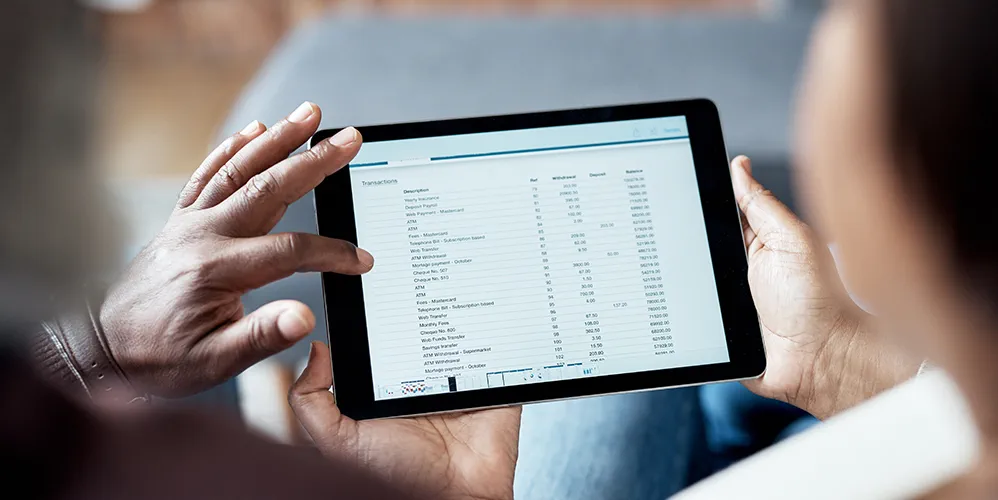
Advantages and Challenges of Digital Banking
15 Dec 2022

Table of Content
Digital Banking is online banking backed by an internet connection. Traditional banks are getting a breather, as a large part of customer traffic is being managed by digital banking apps and net banking. Customers can easily access their accounts and payments through digital devices like smartphones, tabs, laptops, desktops and ATMs. The benefits of digital banking became more conspicuous during the COVID pandemic period when physical branches could not be approached due to social distancing that confined people to their homes. The popularity of digital wallets, bank apps and contactless and cashless payments gained traction as more and more people realised the advantages of digital banking.
The trend is here to stay as the features of digital banking are unquestionably more customer targeted. Digital banks work 24x7 and are ready to serve you at your convenience. In this fast-paced world where time is money, responsive services are a boon. Though the advantages outnumber the challenges, let us take you through both the advantages and challenges of digital banking.
Advantages of Digital Banking
“It’s imperative that every step in the customer journey will begin by the bank understanding the customer’s history and context––everything they have accrued during their journey so far,” says Elad Hoffman, VP of Product, Voca. While banks reimagine their interaction with customers, let us understand what will drive customers towards this complete change. Customer-centric digital solutions will hold the key to this transformation. Digital banking features advantages to woo more and more people towards a smart digital culture.
- Tapping convenience: Amongst the greatest benefits of digital banking, the principal one is the facility to bank from anywhere, anytime.
- Instant delivery: Along with the ease of anytime banking, a good internet connection helps you enjoy speedy banking.
- Security ensured: Banks have complex codes difficult to infringe. This makes them highly reliable negating any kind of manipulation.
- Multiple payment options: The advantages of digital banking finds added value with a choice of payment options. You can download the banking apps on your mobile device or pay with your debit card. Various instant payment apps are supported by your bank mobile app, or you can download them independently.
Challenges in Digital Banking
During COVID, the dependency on digital banking increased. Digital banking has promoted technology-based account opening, digital lending, wealth and investing. Banking is more accessible, and customer appetite for better technology is growing. However, with the growing demand and digital banking pressure, banks are being challenged to cope with the new customer behaviour in various facets of digital banking compliance. Here is a quick overview.
Shift in Banking Habits and Products through Innovation
With quick customer service being the primary focus, banks face challenges in providing a speedy network and facilitating customer agility on their digital platforms. With digital transactions growing popular and the volume of non-cash payments rising, creating financial solutions through interactive tools and customised products should be the main lookout for all financial services. Products that meet customer demands should be presented in the vernacular language in a manner that it reaches the less literate population especially in tier 2 and beyond sectors of the country. Dispute management should be efficiently handled while introducing new products. Customer real-time insights analysis offering greater accuracy should be speedily recovered to address customer choice and product requirements. The technology-enabled change should shift the bank's focus from data-intensive tasks to activities like product enhancement, business development, building compliance and boosting relationships with customers.
Security Concerns
With digital banking gaining momentum for customer convenience, the threat of fraud in financial transactions leaves both customers and banks exposed to swindlers. Banks are working towards spreading awareness amongst customers on the nature of threats that customers could face. They must never diverge confidential financial information to unknown callers/emails/messages. They should practice due diligence while performing financial transactions and change the secure credentials/passwords from time to time. Banks operate on layered security checks enabling customers to stop at any point if doubtful of a transaction. Banks advise customers never to click unknown links without checking Uniform Resource Locator (URL). For banking transactions official banking app or the official website of the bank must be used. Frauds are a constant threat attempting to get confidential information through:
Vishing: Sharing financial information under the pretext of KYC upgradation, unblocking account, SIM card, debit/ credit card.
Phishing: Spoofed emails/SMS, designed in such a way that customers think it is from the bank.
Remote Access: Customers unknowingly download an application on their mobile/computer giving access to customer data.
Misusing UPI 'collect request', by sending fake messages to collect money.
Fake bank numbers/e-wallets/incorrect search engine results/ frauds through social media.
Banks need to take special measures by taking customers into confidence with information on what they must-dos and not do to protect them from becoming victims of these fraudulent activities.
Technical Issues:
Failed connectivity and lack of consistent and accurate data is a major concern with banks. Banks are working towards pre-empting the problems with greater demand load rising from digital technologies. Relying on technically upgraded systems as customer expectations are rising and improved and speedy banking is the minimum expectation. Banks should deploy SaaS teams of engineers to scale the infrastructure based on core banking systems that are somewhat outdated to meet the new technologies of today. They must ensure that the banking digital service can upgrade and embrace future technologies. Banks should keep front-end focus ramping with new-age technology and innovation and prepare to be future-ready to meet customer pressure. In UPI payments too, banks should be able to control technical decline (TD). UPI downtimes need to be efficiently managed by banks.
Lack of Personal Relationships
Customer service is an important factor through which banks retain and gain their new client base. A bad experience with the service provider not mitigated at the right time by the relationship officer can be a damper on the bank's reputation. With technology being the first face in digital banking, non-human bots and customer care helplines are gradually replacing the personalised service that customers still love. These automated services can frustrate customers to the point of quitting. Most online banking apps are creating sets of possible questions for customers, hoping to solve problems. But not all questions address specific problems customers throw. People lack time and are mostly impatient. They prefer being attended to immediately. Therefore, when someone wishes to know what the loan-taking process involves, they are directed to a list of similar questions, that irritate and demotivate customers to another service provider. Personalised support cannot be completely removed and will need to exist alongside AI. Customers cannot be made to wait in long queues and quick attendance must be the lookout. The automated system needs greater improvement, supporting the exact customer query.
Growing Customer Expectations
Customers are switching rapidly to innovative online products and services. The increasing rise in India's digital payment through Unified Payments Interface (UPI) worth INR 10.4 lakh in August 2022 is proof of this transformation. Online banking and mobile banking also took off rapidly during the pandemic. Customers are looking for faster and better performance from their banking apps. Legacy technologies need to be revamped by a younger agile workforce operating with risk tolerance. Amping security further at every level and diminishing vulnerabilities will increase customer trust.
Common Features of Digital Banking
The most common features of digital banking include:
- Banking that is guided through a secure and convenient platform
- The platform should be password protected
- Customers should find it easy to use both financial and non-financial banking products and services
- The digital banking account should be easily accessible
- The platform should enable easeful management of tracking with the latest updated balance, last transaction, and account statements
- Digital banking features for online fund transfer should support NEFT, RTGS, and IMPS without interruption.
- It should have the option of quick automated bill processing
- Track investments and credits
- Cancel automatic payments
Popular Articles
Tag Clouds
Related Articles










-
Disclaimer
The contents of this article/infographic/picture/video are meant solely for information purposes and do not necessarily reflect the views of Bank of Baroda. The contents are generic in nature and for informational purposes only. It is not a substitute for specific advice in your own circumstances. Bank of Baroda and/ or its Affiliates and its subsidiaries make no representation as to the accuracy; completeness or reliability of any information contained herein or otherwise provided and hereby disclaim any liability with regard to the same. The information is subject to updation, completion, revision, verification and amendment and the same may change materially. The information is not intended for distribution or use by any person in any jurisdiction where such distribution or use would be contrary to law or regulation or would subject Bank of Baroda or its affiliates to any licensing or registration requirements. Bank of Baroda shall not be responsible for any direct/indirect loss or liability incurred by the reader for taking any financial decisions based on the contents and information mentioned. Please consult your financial advisor before making any financial decision.
Step-by-Step Guide: How to Apply for and Get a Debit Card Online
Debit cards are alternative plastic cash cards that come with savings and current accounts. People in the country have reached a comfort point using debit cards, especially owing to the ease of a transaction. Linked to the savings account they allow you to spend the money in your savings account. So, if you haven't yet discovered debit cards and their advantages, we will take you through a step-by-step guide on how to apply for a debit card. Read on to get a quick idea of the debit card application process.
Digital Banking a Complete Guide
Digital banking is a financial banking technology, value tapping on product simplicity and personalised customer experience with the help of the Internet. Digital banking is modelled on digitally first incumbent banking. It capitalizes seamless digital payment systems, manages accounts, offers easy reach to financial products like loan management, bill payment and more through mobile and other electronic devices.

